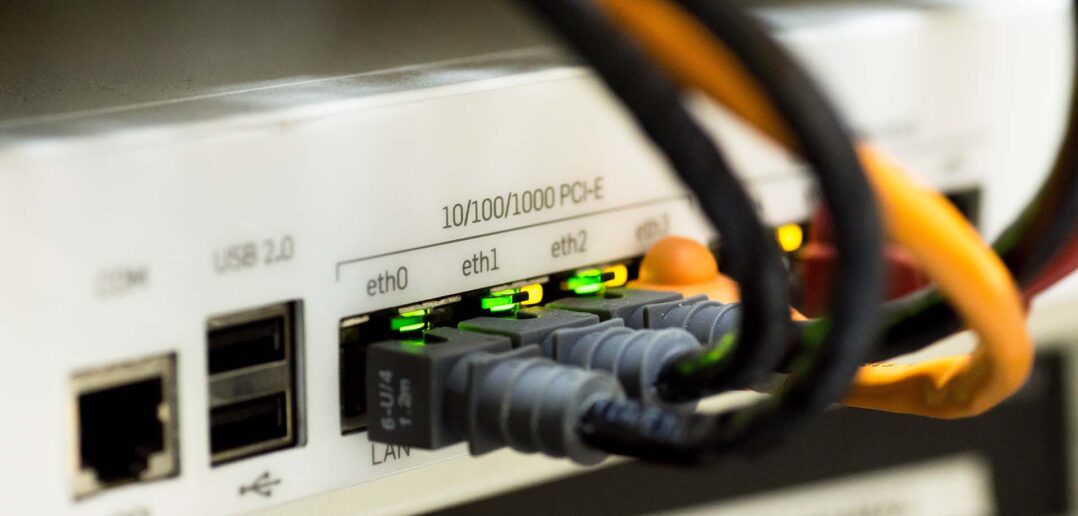The Internet has become a very important and critical part of the modern world. Despite being mainstream for only the past 30 years or so, most of us would never imagine living without it. Most of us don’t really give a second thought to the way we connect to the Internet, at least not until we realise we are outgrowing the equipment that we have or have our equipment fail.
The goal of this article is not to provide specific model recommendations. After all, everybody’s needs are different and it is impossible to provide something that is going to make everyone happy. This guide is merely to provide some guidance to help you make a better selection, and routers are constantly being updated so any model recommendations are likely to be out of date within a few months.
Determining Your Connection
The first thing you will need to establish when picking a new router is to identify the type of connection you have. Some equipment will require the use a router with some form of modem, while some will work fin with just a router.
Some areas are fed by some form of ADSL or VDSL connection. These connection types will a DSL modem to go along with your router. You can get routers that have inbuilt modems for these connections. You can also use a router with a separate modem running in bridge mode.
Some connections use a cable standard based on DOCSIS. This will require a router with a modem capable of handling the DOCSIS standards these networks uses. Again, this can be a separate modem or have one built in.
Many more modern connections now use a fiber connection, which will usually terminate at an ethernet port on the wall. These connections can work with any router that has an ethernet WAN port. Which is basically almost all of them.
Your Internet Provider will be able to advise which connection you are currently using if you are unsure. Once you’ve worked out what your connection, you then need to make a decision about what sort of capabilities you are looking for. Most routers will generally fall into various categories, which we will describe below.
ISP-supplied or other basic router
Most ISP’s will supply basic level routers to provide an internet connection. These are frequently basic units that are built to a cost.
The advantage of these units is that they are the units that receive the most support from the internet provider you bought the unit from. This can be great for less-technical users where they have only limited access to assistance. It means they are able to contact the Internet Provider and be guaranteed of at least basic support to get back on the air.
The downside of these units is they are frequently low-cost, basic units. This can be OK for those who just need a connection, but for those that have more advanced needs can quickly outgrow these units. They also sometimes have weaker wifi setups, which can cause problems for larger premises or for those that run high-bandwidth applications over wifi.
For this reason, we’d really only recommend then for situations where you just need a connection, and you need something that is well-supported by the provider.
Prosumer Units
The next level up are colloquially known as “prosumer” devices. These devices are far more capable than the budget devices. They often offer a lot better support for features that many will provide useful.
Faster CPUs and more memory. More expensive routers tend to have more powerful processors and more RAM than the basic ISP provided routers. This is really beneficial for those that have a lot of devices, or faster connections. The router will be able to handle the faster speeds and the additional devices without being as bogged down. This allows your network to more easily support more advanced functions.
Dual-band Wifi. While cheaper devices are coming out with both 2.4ghz and 5ghz wifi options, the wifi in more high-end devices tends to be significantly improved. The 5 gigahertz band offers significantly more bandwidth over 2.4 gigahertz, though 2.4ghz tends to give you greater coverage. This also covers newer wifi standards which benefit those running high-bandwidth applications over wifi.
Guest Wifi Networks. This feature is more common in higher-end routers. This allows you to set up a dedicated “guest” network. This guest network can then be given to visitors to your home so they can have Internet access, but will usually prevent access to your own devices. This can help keep your own devices secure, while allowing visitors to your home to have Internet access.
Improved Quality of Service (QOS). More expensive routers have better support for QOS. This can sometimes be a little bit tricky to configure well, but it basically means that certain types of traffic can get prioritised. It means for instance if you are running a voice call with someone, you can prioritise it over someone’s large download. Where QOS is included on lower models, performance often suffers from the hardware in these units.
Support additional services. Some more capable devices can be used to provide additional services to the network. For instance, my ASUS router is also acting as a print server, meaning my printer can be used by any machine on my network. Some can also provide simple file sharing services. It’s not quite as powerful as running your own server, but they are quite often simpler to set up and maintain. These are often not included on the cheaper routers, or don’t perform as well, because of the more basic hardware.
Going for a prosumer router can give you far more capabilities than a basic router, sometimes for not a whole lot more cost. They are a good option for those that need more features and power but want something that is still easy to use.
Gamer units
There are some units that are geared towards gamers. These have become common only fairly recently as router manufacturers are trying to cash in on the online gaming craze.
Sometimes you have to be careful with these. They do sometimes offer more capable hardware again than a prosumer unit which allows for even larger networks and faster connections. They can also offer more bandwidth for Wifi connections.
The problem is that some of the other features that are advertised fall into the category of “marketing wank”. For instance, those that promise to prioritise gaming traffic really just use the same Quality of Service setups found in the prosumer units. This means from a software perspective they’re not always offering much over what is included in prosumer units, they’re just changing the marketing to justify the price hike.
We’d really onto recommend these units if you really need the additional bandwidth over wifi, or run an obscenely large network and want something that remains user friendly.
Enterprise-Level Routers
Manufacturers such as Ubiquti and Synology have come out of the woodwork in more recent years. These manufacturers are essentially bringing enterprise level capabilities into something that can be used either in the home or small office.
These routers bring enterprise level features into a package that is often about the same price as the prosumer units. These often offer all the same features as the prosumer units. What they offer on top of that is the level of control you’d expect from enterprise grade equipment.
This can for instance include Virtual LANs or VLAN’s, have significantly more control over how network traffic is routed, and the ability to build more complex networks. This level of control is great for those running complex home or small office networks. The downside is you really need a strong knowledge of networking to be able to make the most of these devices.
In Conclusion
This should give you some guidance as to what type of device you should go for.
Basic units are OK if you want a device that gives you a connection. However, with the number of connected devices constantly increasing, many people will be happier with a prosumer or enterprise level device.
The deciding factor between these two would be whether you prioritise having absolute control over all aspects of your connection, or whether your priority is a mid-range device that priorities ease of use.
Of course, some may benefit from the gaming routers, but only if the additional wifi capabilities. Just be careful not to fall for the marketing wank.



